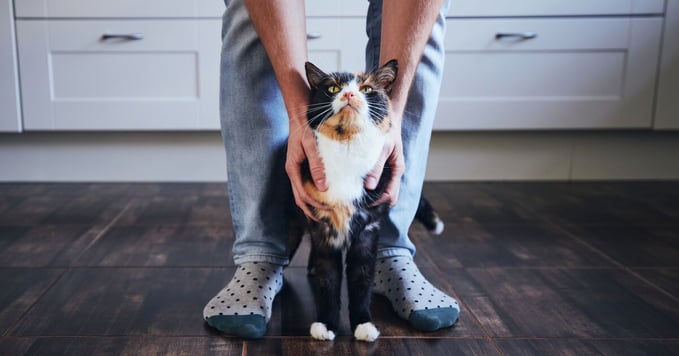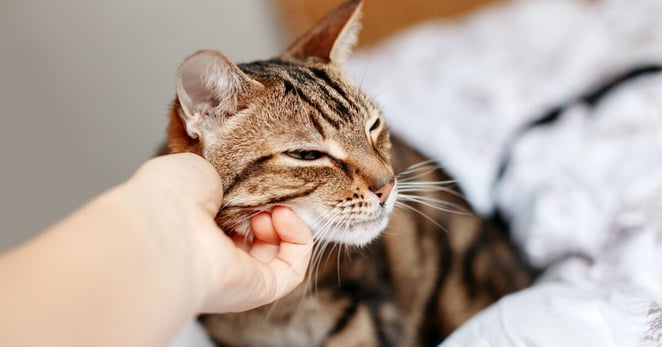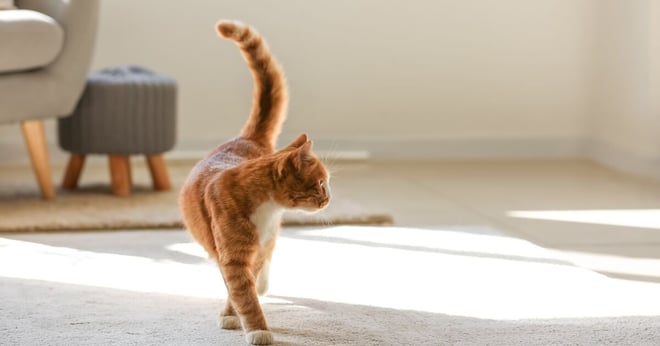Should My Cat Learn To Stay Home Alone? Happy Cat Expert Explains
It is usually said that cats are very independent: they are the real boss at home, they do not need us, they just cover their needs. But as those of us who live with cats know, this is just not true! Cats appreciate human contact, presence, attention, and playtime. So much so in fact our cats can occasionally develop separation-related problems when we are not around.
It is interesting to note that behaviourists no longer refer to this as cat separation anxiety. Instead, this is now classified as a separation-related problem. Although anxiety can be one of the main issues, frustration or pain can also contribute to the problem.
But all that aside, what can we do to help? When we live with a sociable cat, it is advisable that they learn to be left alone. Here is my advice for training a cat to be home alone:
1 - Adapt Your Cat’s Living Environment
The cat resources in your household are essential for their wellbeing. It is not possible to have a happy cat if they are not allowed to scratch, climb, play, jump, eat, hide, rest, and so on. Try to optimize the environment for your cat when you are at home and when they must be alone.
Remember, a cat should always have access to water, toys, and objects to scratch. It is also important for them to have an appropriate place for resting. Cats usually like covered and high places.
Even if your house is adapted to your cat, households look very different when we are at home compared with when we are absent. For example, there is not any noise from the TV, radio, or children, and some doors might be closed. However, good advice for sociable cats with separation-related problems would be that the living environment should differ as little as possible when the cat is home alone from when we are there with them.

If you are going to be absent, place food in different areas around the house so that your cat has to search for them. This can be great for mental stimulation and, this way, they will not spend all their time sleeping!
2 – Build A Strong Relationship With Your Cat
The bonds we create between us humans and our pets can be essential for cats to be happy. The stronger the bond, the better our relationship. However, on some occasions a strong bond may be confused with a dependent relationship or lack of self-confidence. This may be the cause behind cat separation-related problems. To form a good bond, and therefore build a good relationship, it is important to:
- Treat Cats Well: Do not use punishment but instead be affectionate and respectful towards your cat.
- Be Consistent: It is also important to be consistent in your interactions. Make sure everyone in your home understands how your cats likes to interact with people, how they like to be stroked, what toys they like to play with, and so on.
- Ask for Permission: Don’t pet the cat if they are showing signs of discomfort.

3 - Make Your Departures Predictable
Cats thrive on routine and predictability, and there are many ways we can achieve this. For example, you could tell your cat "I’m going out" just before you start getting ready to leave your cat home alone. This can help your cat manage their frustration better as it is believed to be one of the major components behind cat separation-related disorders.
4 - Take Your Cat For A Veterinary Check-Up
Some recent publications have revealed that a high percentage of cat separation-related issues are due to health problems. Make sure you are up to date with your cat’s check-ups and talk to your vet, especially if your cat is in pain as this is not always obvious.
5 – Practice Separation In A Controlled Way
If your cat is struggling with separation, try to anticipate any sudden changes that might affect them. For instance, this could include returning to work after a holiday or sickness leave, changes in work schedules, and so on. Thinking ahead can prevent a sociable cat from going from spending many hours in your company to suddenly spending all their time alone.

One way to approach this is to build up this separation gradually. It is better to start with a few departures, then increase them little by little so the change is progressive. You can even start just by being in a different room with the door closed, preventing your cat from having access to you.
6 - Monitor What Happens When Your Cat Is Home Alone
Nowadays it is easy to get a camera or video system at home. This is the best way to know exactly what is happening while you are away. In my experience, I have many anecdotes about the contrast between what many families believed was happening while they were away and what was actually happening. It is highly recommended to check what happens after routine changes, such as a return to work and school after the summer holidays. You might be surprised how well your cat is coping!
If you notice any sign of anxious behaviour, fear, or frustration in your cat, contact a qualified behaviourist for tailored help.
Are you looking for more advice on helping cats with separation-related problems or are simply interested in learning everything there is to know about all things feline? If so, check out our other Happy Cat Expert articles! You can also stay informed with all the latest tips, Q&As and FELIWAY info by signing up to our newsletter.
